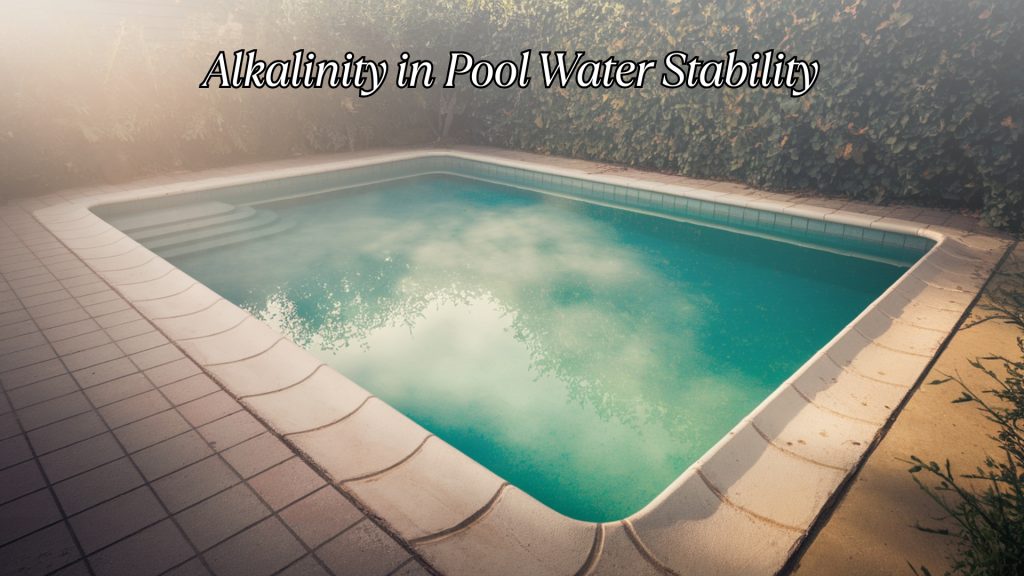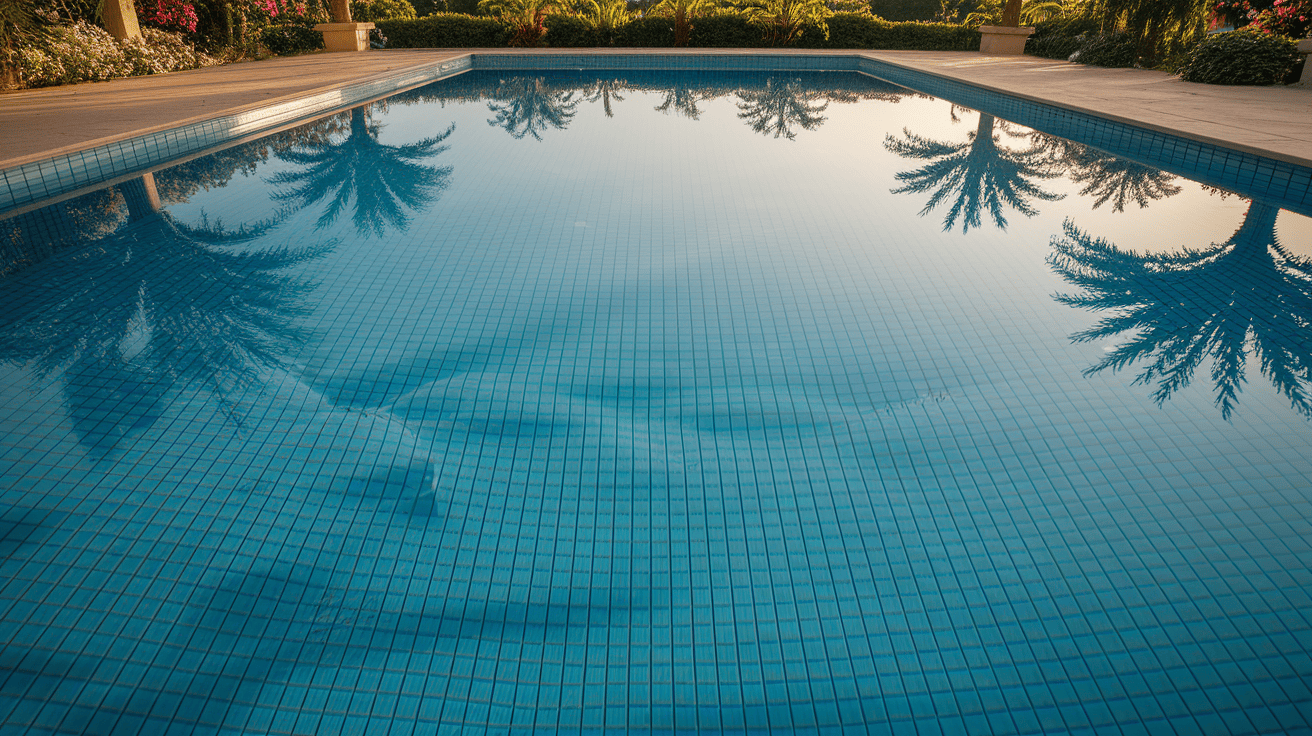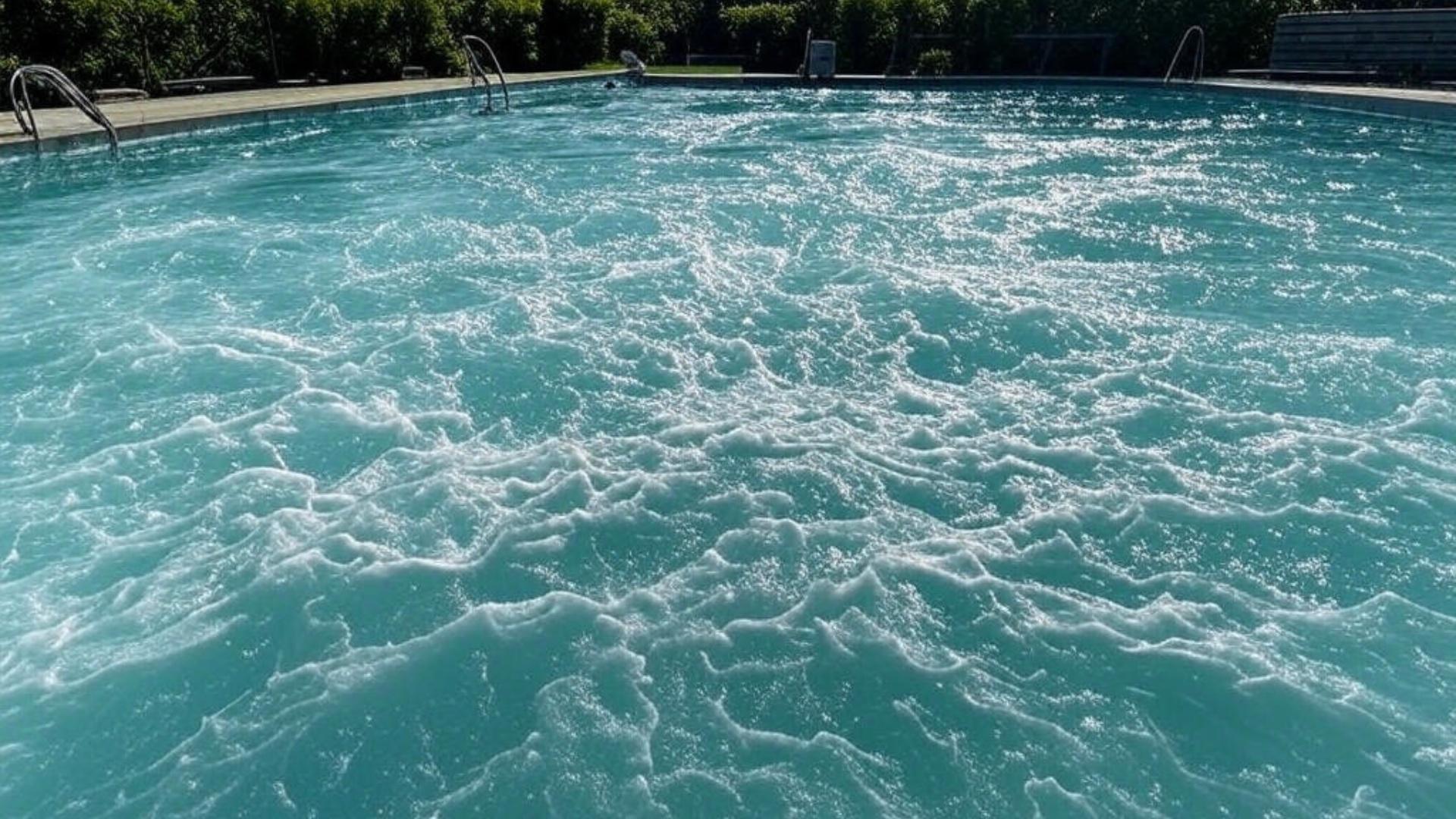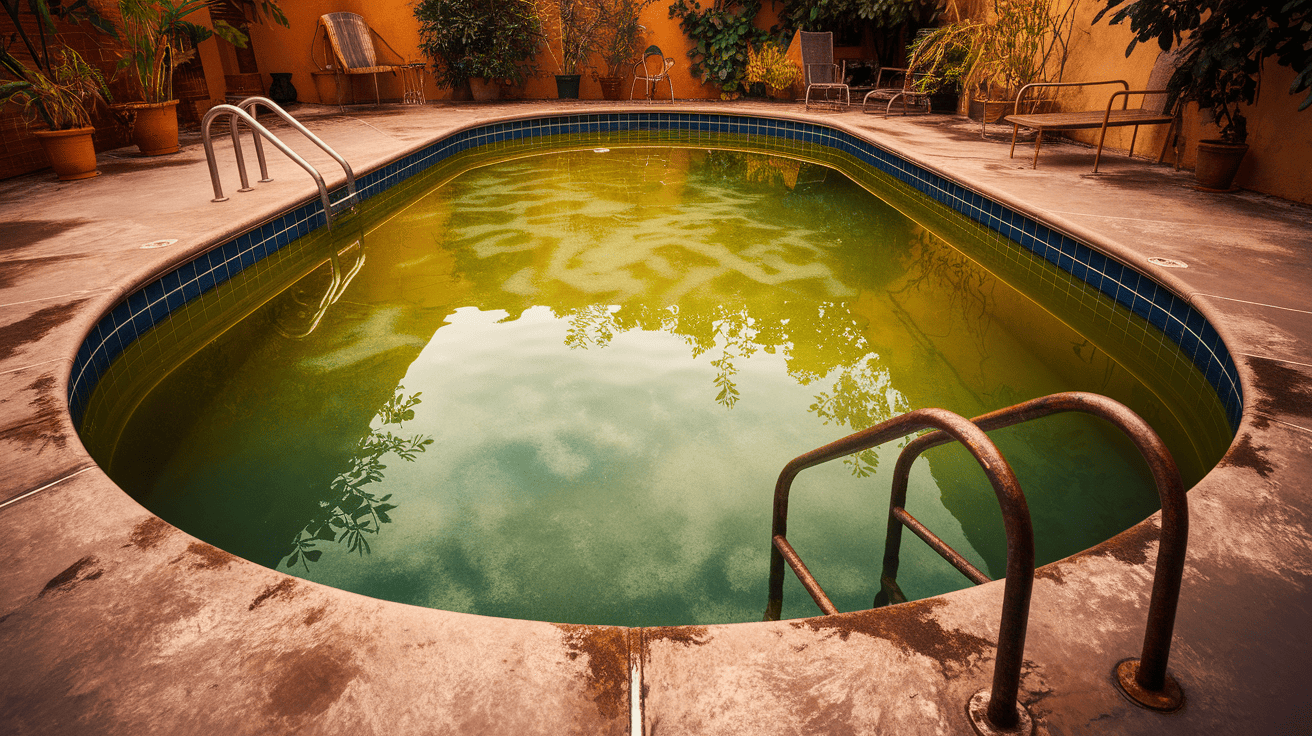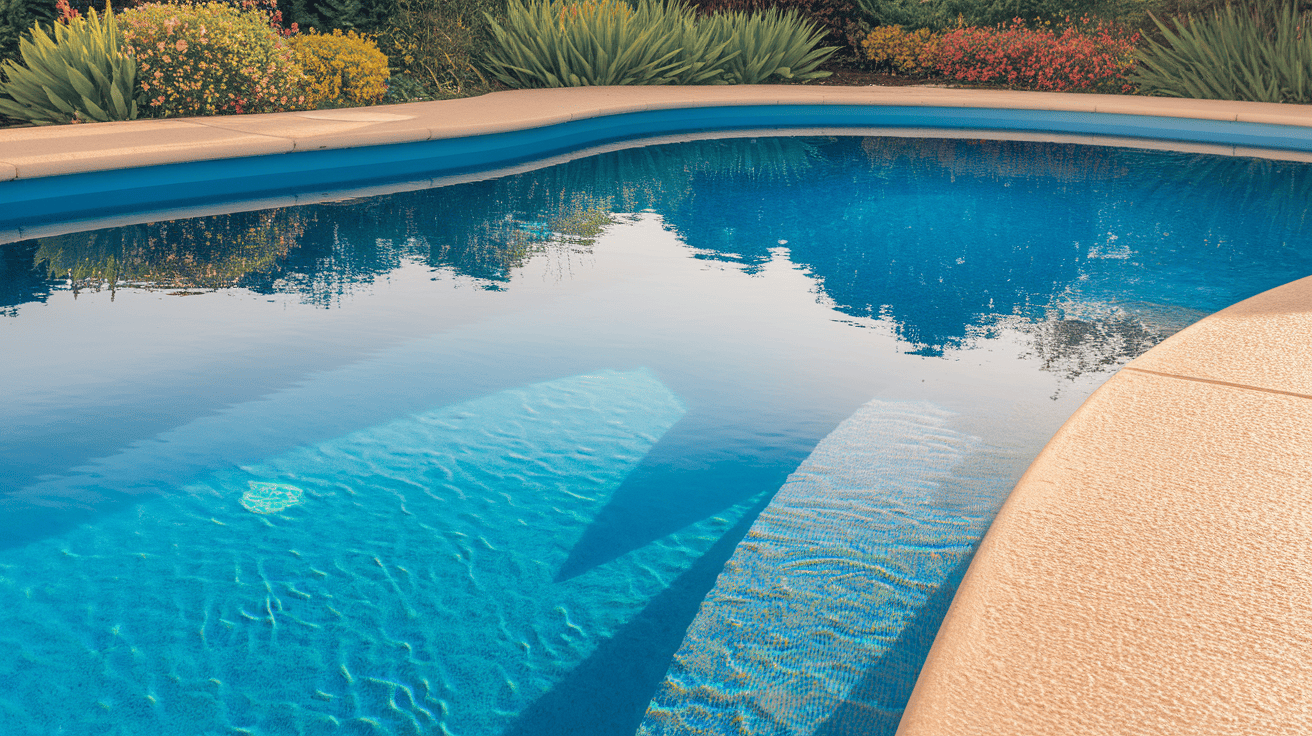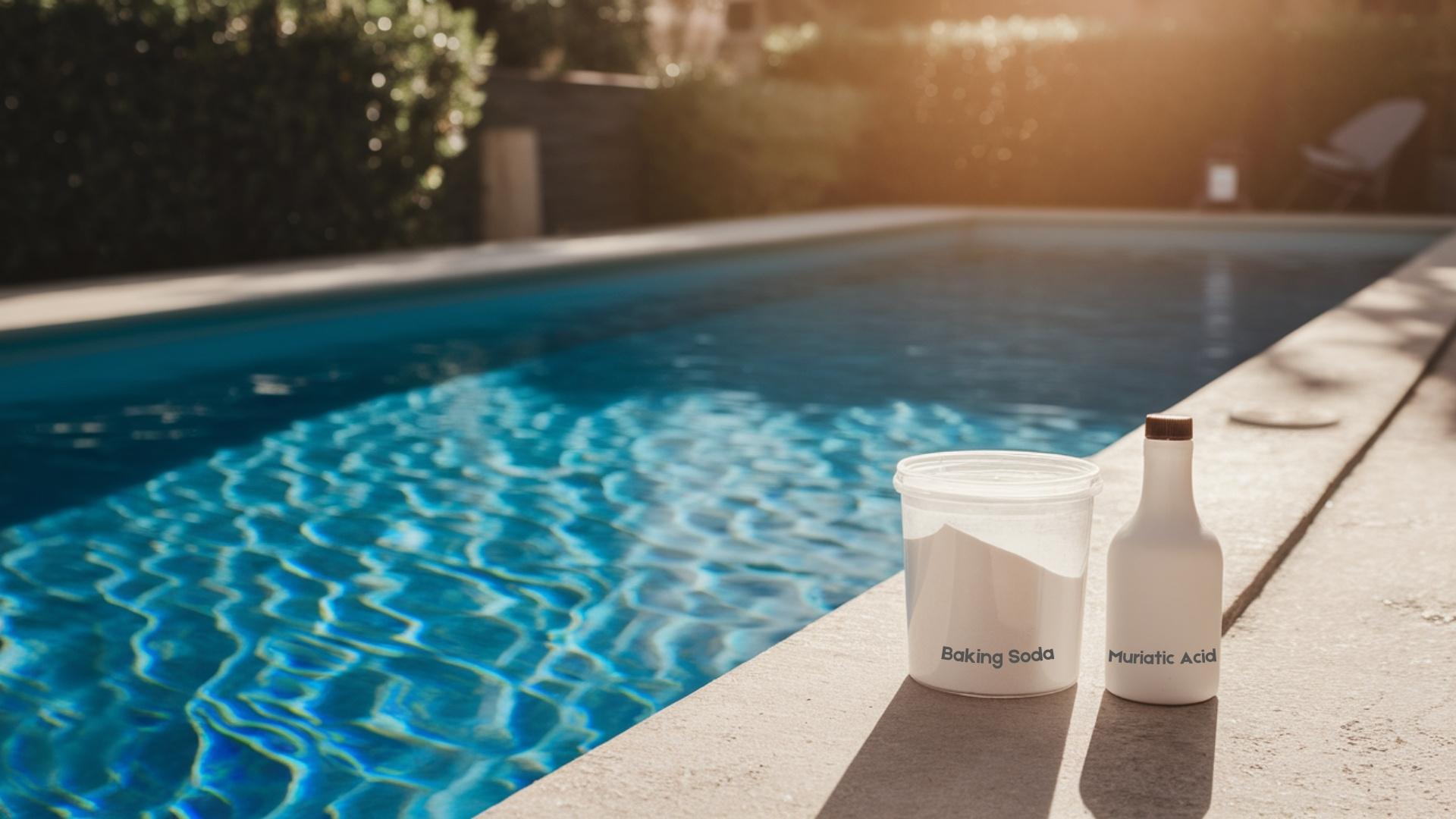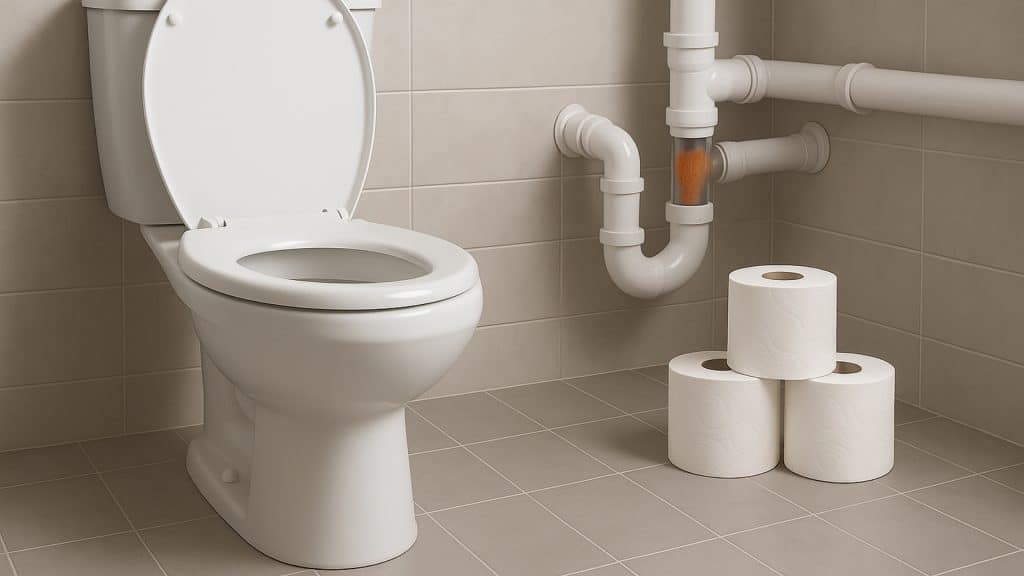Ever stare at your cloudy pool water and wonder why your chemicals aren’t working? The secret might be hiding in your water’s alkalinity. Pool alkalinity is the unsung hero of water chemistry, ensuring an enjoyable swimming experience.
It’s the invisible force that stabilizes your water’s pH, protects your expensive equipment, and makes your sanitizers work effectively.
Many pool owners obsess over chlorine levels while completely overlooking this crucial aspect of water balance.
When alkalinity goes wrong, you’ll face everything from stubborn algae to corroded pool fittings – entirely preventable problems.
Understanding alkalinity doesn’t require a chemistry degree, but mastering it will convert your pool maintenance routine and save you countless hours and dollars in the long run.
What is Alkalinity in Pool Water?
Alkalinity in pool water works like a protective shield for your pH levels. Think of it as a buffer that prevents sudden changes when acids or bases enter your pool.
Water with proper alkalinity (ideally between 80-120 ppm) helps keep your pool stable and balanced. When alkalinity levels are too low, pH levels fluctuate rapidly, leading to issues such as equipment corrosion, skin irritation, and cloudy water. When it’s too high, you might see scaling on surfaces and equipment.
You can test alkalinity using simple test strips or kits available at pool stores. If the pH level is low, you can add sodium bicarbonate (baking soda) to raise it. If it’s high, you’ll need acid to lower it.
Regular alkalinity checks, performed approximately once a week, help ensure your pool remains crystal clear and comfortable for swimming throughout the entire season.
Why is Alkalinity Important for Pool Water?
Maintaining proper alkalinity in your pool water is crucial for several reasons. It plays a vital role in maintaining the balance of your pool water and ensuring it is safe for swimmers. Here’s why alkalinity matters:
- Alkalinity acts as a buffer against sudden pH changes, maintaining stable water chemistry.
- Proper levels protect your pool equipment from corrosion caused by acidic water.
- Balanced alkalinity prevents scale formation on pool surfaces when levels rise too high.
- Good alkalinity helps your sanitizing chemicals, such as chlorine, work more effectively.
- Well-maintained levels reduce eye and skin irritation for swimmers.
- Correct alkalinity extends the life of your pool liner and other components by preventing damage.
- Stable alkalinity makes other water chemistry adjustments easier and more predictable.
Without proper alkalinity levels, you’ll find yourself constantly battling pH problems and potentially facing costly repairs to your pool equipment and surfaces. Think of alkalinity as the foundation of good pool chemistry.
How Does Alkalinity Affect Pool Water Balance?
Alkalinity is a critical factor in your pool’s water balance. It works closely with pH and other chemical levels to maintain clear, comfortable, and safe water.
When alkalinity levels deviate from the ideal range, various issues can arise that impact both swimmer comfort and pool equipment.
1. High Alkalinity
When your pool’s alkalinity rises above 120 ppm, you’ll likely notice cloudy water that doesn’t clear up even with proper filtration. Scale deposits may form on pool surfaces and equipment, appearing as white or grayish crusts.
The most frustrating issue is how difficult pH adjustment becomes – you might add acid to lower the pH, but it quickly rebounds due to excessive buffering.
This creates a cycle of adding chemicals without achieving stable readings, resulting in wasted money and effort.
2. Low Alkalinity
When the alkalinity level drops below 80 ppm, your pool water becomes unstable, experiencing rapid pH fluctuations. Even small chemical additions or rainfall can cause dramatic pH swings.
This creates acidic conditions that corrode metal components, such as ladders and heater elements.
Pool surfaces suffer too – vinyl liners wrinkle and fade, while concrete surfaces etch and roughen. Swimmers often experience burning eyes and irritated skin.
Low alkalinity essentially removes your pool’s chemical stability, making proper maintenance nearly impossible.
3. Ideal Alkalinity Range
The recommended alkalinity range of 80-120 ppm provides the perfect balance for most residential pools.
This range offers sufficient buffering to maintain a stable pH while preventing issues at either extreme. Pool types have specific needs.
Vinyl and fiberglass pools do best at 80-100 ppm, while concrete and plaster pools need 100-120 ppm due to their alkaline surfaces.
Staying within these levels ensures effective chemical performance, protects your pool’s components, and creates a comfortable swimming experience.
How to Test Alkalinity in Your Pool
Testing your pool’s alkalinity is a simple process that you can easily do at home. Regular testing helps you identify problems early and maintain a balanced water supply. Here are the common methods, steps, and tips:
| METHOD | PROCESS | FREQUENCY | TIPS |
|---|---|---|---|
| Test Strips | Dip strip, wait 15 seconds, compare color | Weekly | Don’t touch pads, store properly, sample from elbow-deep |
| Liquid Test Kit | Add reagent drops until the color changes | Every 2-4 weeks | Hold the dropper vertical, test in natural light, and rinse the vials |
| Digital Testers | Calibrate, submerge, and read the display | Every 2-4 weeks | Calibrate regularly, and clean the sensor after use. |
Regardless of the testing method you choose, consistency is crucial. Try to test at the same time of day and follow the manufacturer’s instructions carefully.
If you’re unsure about your results, you can always take a water sample to your local pool store for professional testing.
How to Adjust Alkalinity in Your Pool?
Adjusting your pool’s alkalinity requires patience and the right chemicals. To increase alkalinity, add sodium bicarbonate (also known as baking soda) to your pool water.
The typical dose is 1.5 pounds per 10,000 gallons to raise alkalinity by 10 parts per million (ppm). Broadcast the powder evenly across the pool surface.
Keep the pump running during this process. To decrease alkalinity, use muriatic acid or dry acid (sodium bisulfate). Add acid in small amounts.
Always dilute it first by pouring acid into water. Never pour water into acid. For both adjustments, make gradual changes. Aim for 10-20 ppm adjustments at a time—retest after 24 hours before making further changes.
Rapid adjustments can throw off your pool’s overall chemistry.
They can potentially damage equipment. Always wear appropriate safety gear, such as gloves and eye protection, when handling pool chemicals. Store them in a cool, dry place away from children.
Maintaining Proper Alkalinity for Long-Term Pool Health
Consistent alkalinity management is one of the most important aspects of pool care that many owners overlook. When you maintain proper alkalinity levels, you create a foundation for all other aspects of pool chemistry to work correctly. Here’s why keeping your alkalinity stable matters:
- Stable alkalinity prevents damage to expensive pool equipment and surfaces.
- Balanced alkalinity makes your chlorine work more effectively and last longer.
- Regular monitoring saves money by reducing the need for shock treatments.
- Proper levels help prevent algae growth by supporting effective sanitization.
- Seasonal adjustments, especially after heavy rain, help keep your water balanced year-round.
- Consistent testing and small adjustments prevent the need for major chemical corrections.
- Professional-grade water quality can be maintained without professional costs.
Remember that alkalinity is the foundation of pool chemistry – when it’s right, everything else becomes easier to manage. Make checking alkalinity part of your regular pool maintenance routine, and you’ll enjoy clearer water, fewer chemical issues, and a longer lifespan for your pool equipment.
The Bottom Line
Alkalinity truly is the backbone of proper pool chemistry. It silently works behind the scenes to buffer pH, protect your pool’s surfaces, and maximize chemical efficiency.
Without proper alkalinity, you’re fighting an uphill battle, experiencing constant pH swings, wasting chemicals, and risking potential damage to your pool. The good news? Once you understand how to test and adjust this critical measurement, maintaining the right levels becomes second nature.
Your reward will be crystal-clear water that’s gentle on swimmers’ eyes and skin, equipment that lasts years longer, and far less time troubleshooting water quality issues.
Make alkalinity your first checkpoint in pool maintenance, and you’ll enjoy a healthier, cleaner, and more enjoyable swimming environment throughout the entire season.

